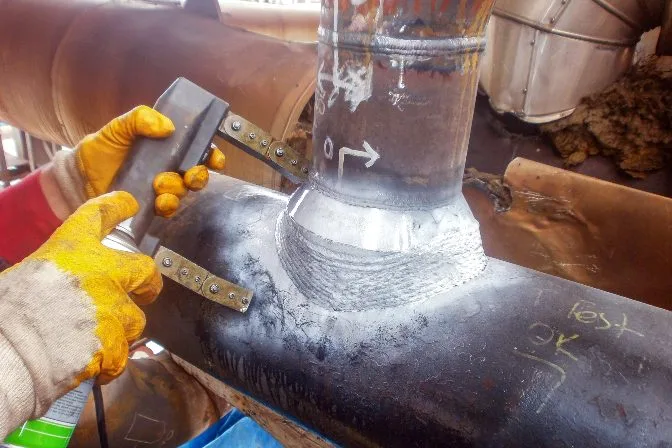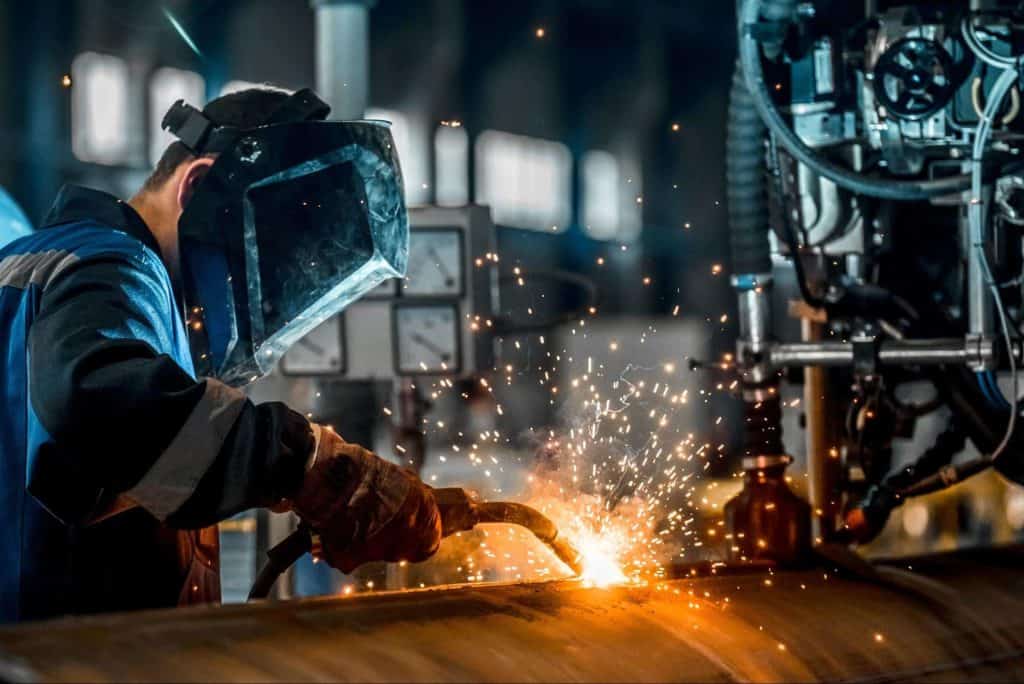A Comprehensive Overview to Understanding Exactly How Welding Examination Functions: Techniques, Specifications, and Best Practices for Quality Control in Steel Fabrication
Recognizing the complexities of welding examination is critical for maintaining the integrity of metal construction. Numerous methods, such as aesthetic and ultrasonic screening, play a crucial function in identifying potential defects, while adherence to developed standards makes sure conformity and durability. Executing ideal practices can dramatically enhance high quality assurance measures. However, the landscape of welding assessment is not without its obstacles. What issues develop in the field, and exactly how can these be successfully alleviated? Checking out these aspects discloses the depth of this vital technique.
Importance of Welding Assessment
Although welding is a vital process in different industries, its honesty directly influences the safety and security and performance of structures and components. Efficient welding evaluation is essential for determining problems that can jeopardize the quality and resilience of welded joints. This process makes certain adherence to developed standards and requirements, which are important for maintaining structural integrity and functional integrity.
Welding examination offers several objectives, including verifying that the welding procedure has actually been implemented properly, evaluating the quality of materials used, and confirming that the completed product satisfies regulative and sector criteria (Houston Welding Inspection). Via extensive inspection, possible concerns such as porosity, cracks, and insufficient blend can be detected early, protecting against expensive repairs and alleviating safety and security risks
In addition, consistent welding examinations foster self-confidence amongst stakeholders, consisting of engineers, customers, and regulatory bodies, by demonstrating a dedication to high quality guarantee. The significance of welding examination can not be overemphasized; it is indispensable not only for conformity with legal needs but likewise for boosting the general efficiency of welded structures. Ultimately, a durable welding evaluation program is a positive procedure that safeguards against failures, ensuring the durability and integrity of bonded components in their desired applications.
Usual Welding Assessment Methods

Visual evaluation is the initial line of protection, allowing inspectors to identify surface area flaws such as fractures, damages, or incomplete combination. Radiographic testing uses X-rays or gamma rays to expose inner imperfections, making it excellent for complex welds. Ultrasonic screening uses high-frequency acoustic waves to identify subsurface issues, supplying specific dimensions of weld stability.
Magnetic bit screening works for ferromagnetic products, highlighting surface and near-surface gaps when fragments are used to a magnetic area. On the other hand, color penetrant screening makes use of a fluid dye to disclose surface-breaking problems, making certain that even the tiniest defects are identified.
Each method has its limitations and staminas, frequently demanding a combination of approaches for thorough evaluation - Houston Welding Inspection. By applying these evaluation strategies, high quality guarantee in steel construction is accomplished, making certain that bonded frameworks meet safety and security and efficiency standards
Sector Requirements for Welding


The American Welding Society (AWS) and the American National Standards Institute (ANSI) are two prominent companies that establish welding standards. AWS D1.1, for example, details the demands for welding steel structures, while AWS D1.2 concentrates on aluminum. Internationally, the ISO 3834 basic addresses quality requirements for fusion welding, providing a structure relevant across nationwide borders.
Finest Practices for Quality Control
Quality control in welding is critical to accomplishing safe and long lasting building and constructions. Applying best practices guarantees that every weld satisfies the called for specs and criteria. First, developing an extensive top quality monitoring system (QMS) tailored to the details welding job is crucial. This QMS must specify obligations, roles, and treatments to reduce risks and enhance liability.
Routine training and qualification of welding personnel are essential for preserving a proficient labor force. Constant education and learning on the current welding strategies and modern technologies makes certain that examiners and welders are knowledgeable concerning existing standards and methods.
Furthermore, carrying out pre-weld inspections to review materials and devices can stop flaws before they occur. Houston Welding Inspection. Throughout the welding process, real-time surveillance and documents of welding criteria aid recognize disparities right away. Post-weld inspections need to include thorough exams utilizing non-destructive screening (NDT) methods to guarantee the honesty of the welds
Additionally, keeping clear communication among group members advertises a culture of quality. Normal audits and testimonials of the welding process assistance determine locations for enhancement. By sticking to these ideal techniques, organizations can attain optimum quality control, ultimately leading to boosted security and efficiency in steel construction projects.
Obstacles in Welding Assessment
Although welding evaluation is critical for making sure architectural honesty, it provides a selection of difficulties that can make complex the analysis process. One substantial obstacle is the variability in welding strategies and products used, which can influence the uniformity of weld quality. Different welders might employ varying methods, causing inconsistencies that inspectors need to determine and examine.
An additional obstacle entails the detection of flaws. Non-destructive screening (NDT) approaches, such as radiographic and ultrasonic testing, can be intricate and need proficient technicians to translate results properly. Incorrect positives or negatives can happen, potentially leading to pricey rework or endangered safety.
Furthermore, the presence of ecological factors, such as temperature and humidity, can influence the honesty of welds and the effectiveness of examination methods. Assessors must likewise browse the regulatory landscape, making certain compliance with industry criteria, which can differ by territory and application.
Final Thought
Finally, welding assessment plays an important role in making certain the integrity and safety and security of steel manufacture. Employing a variety of inspection techniques, sticking to recognized market standards, and executing reliable top quality monitoring techniques collectively boost the reliability of bonded frameworks. Despite the obstacles encountered in the evaluation procedure, a dedication to constant enhancement and adherence to ideal methods can significantly reinforce the quality control structure, promoting better confidence amongst stakeholders in the welding sector.
Effective welding assessment is necessary for identifying flaws that might endanger the top quality and sturdiness of welded joints.In addition, consistent welding evaluations foster self-confidence among stakeholders, including engineers, clients, and regulatory bodies, by demonstrating a dedication to high quality guarantee.The American Welding Society (AWS) and the American National Standards Institute (ANSI) are her explanation two famous companies that develop welding requirements. During the welding procedure, real-time monitoring and documents of welding specifications assist determine variances promptly. Regardless of the challenges dealt with in the inspection process, a commitment to constant enhancement and adherence to browse around these guys ideal techniques can dramatically boost the high quality assurance framework, promoting higher self-confidence amongst stakeholders in the welding sector.